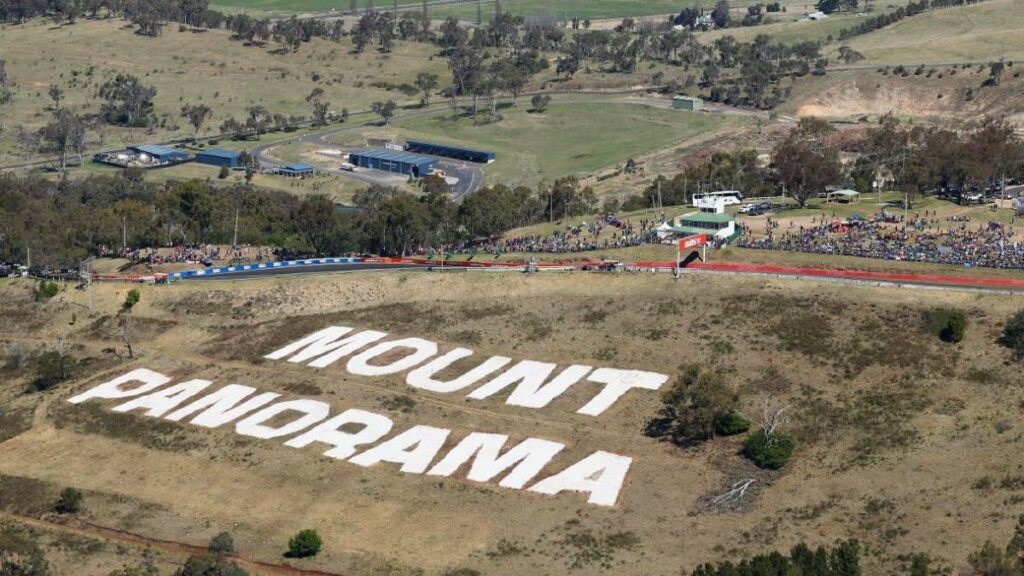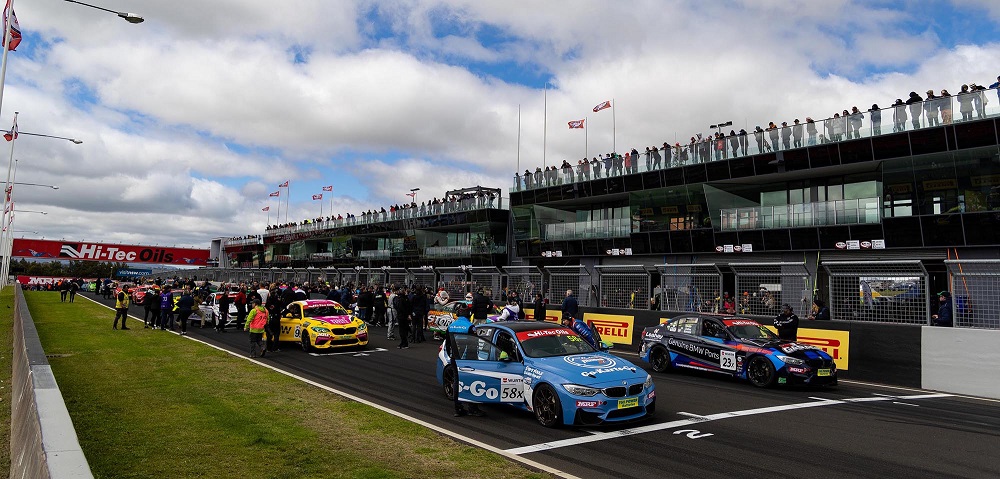Play Podcast: 04-01-24f1weekly1037.mp3
Nasir Hameed has returned from his long journey to the land down under attending the Australian Grand Prix meeting up with F1Weekly Familia Jason Bentley “The Original JB” Bringing the listeners a tour of the Panorama Race circuit.

Mt Panorama Race Circuit
Bathurst’s Mount Panorama circuit has become an indelible part of Australian sporting history and a gathering place for petrolheads the world over thanks to its mix of speed, danger and endurance.
Winding its way up and down a hillside, the circuit has been enchanting racing fans since the 1930s and remains one of the most challenging circuits in world motorsport. Winning here, whatever the category, is major accolade for any racing driver.
The programme of events has expanded in recent years to take in not only the Bathurst 1000 but also the Bathurst 12 Hours for international GT cars, the 6 Hour production car enduro, Challenge Bathurst for all comers and the Bathurst International, for the Australian Racing Group’s roster of categories.

The circuit owes its existence to the pioneering vision of one man, Bathurst Mayor Martin Griffin. Enthused by racing at the Vale and Peel circuits, which used public roads in and around the city during the 1930s, Griffin hatched plans for a new course. This would feature fast straights, hairpin bends and plunging elevation changes in order to challenge man and machine to the full.
With the depression in full force, gaining funding for such an enterprise was never going to be easy, so Griffin attracted Federal monies aimed at relieving unemployment via the ruse of creating a scenic road for tourists. He ensured that engineers built each corner just a little wider than on the plans… The Mount Panorama Scenic Drive was officially opened on 17 March, 1938.
With the support of the New South Wales Light Car Club and the Auto Cycle Union, the first event was organised in Easter of the same year, before the track surface had been sealed. Unusually, it was a combined bike and car meeting, with bikes racing on the Friday and Saturday, before handing over to the cars on Sunday and Monday. Those early events featured primitive facilities – a sea of canvas tents would form rudimentary paddock facilities, and there was nothing but the occasional (and rickety) wooden fence to protect drivers and riders should they get anything wrong while crossing ‘The Mountain’.

More photos and comments from Nasir’s trip to Australia coming this week.
